#The Origins of Global Wind Day
Explore tagged Tumblr posts
Text
वैश्विक पवन दिवस पहली बार 2007 में यूरोपीय पवन ऊर्जा संघ (EWEA) और वैश्विक पवन ऊर्जा परिषद (GWEC) द्वारा स्थापित किया गया था। पहल का उद्देश्य पवन ऊर्जा को बढ़ावा देना और जनता को इसके लाभों के बारे में शिक्षित करना है। तब से, उत्सव ने वैश्विक मान्यता प्राप्त की है और पवन ऊर्जा की क्षमता के बारे में जागरूकता बढ़ाने में एक आवश्यक घटना बन गई है।
#वैश्विक पवन दिवस#Global Wind Day#Global Wind Day 2023#wind day#The Origins of Global Wind Day#The Significance of Global Wind Day
0 notes
Text
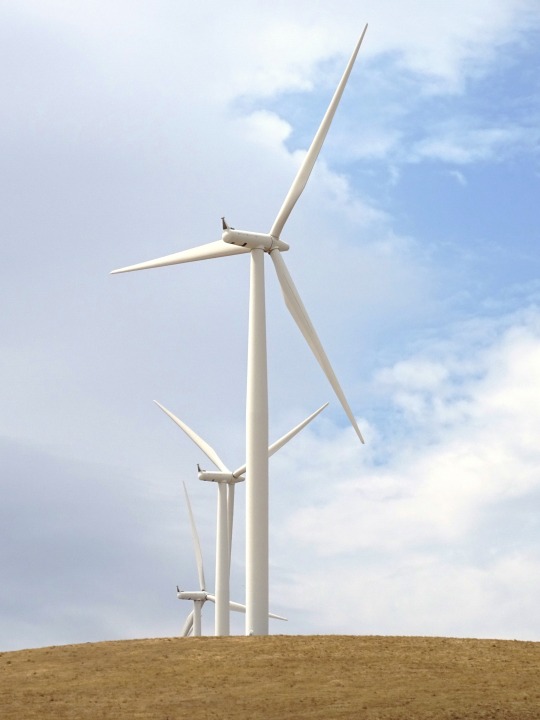
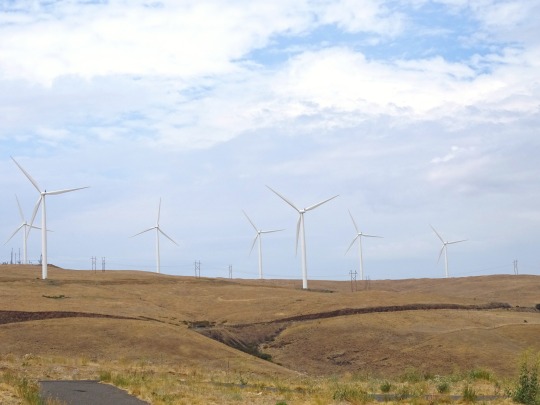
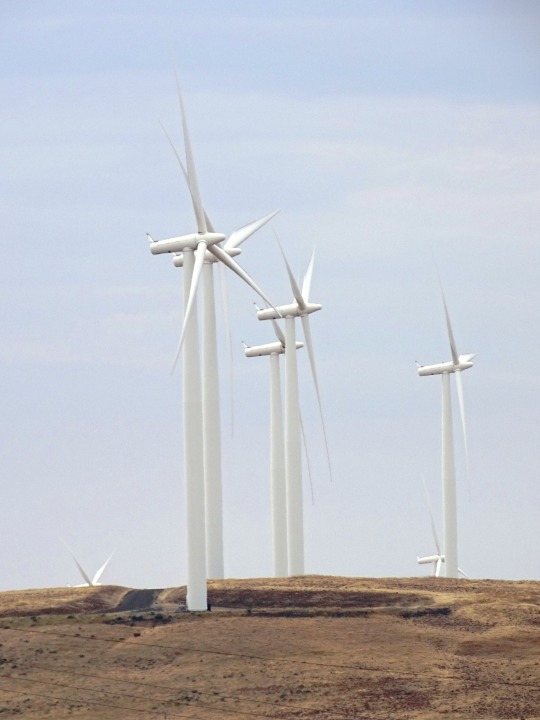
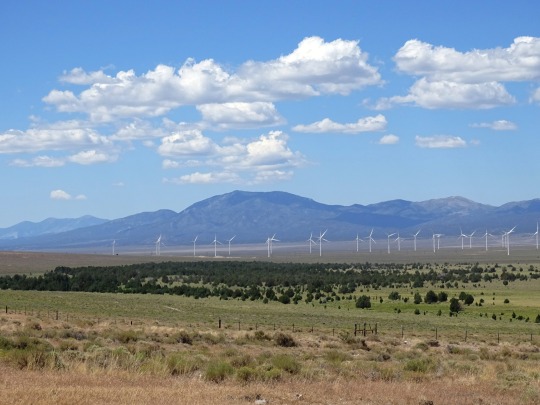
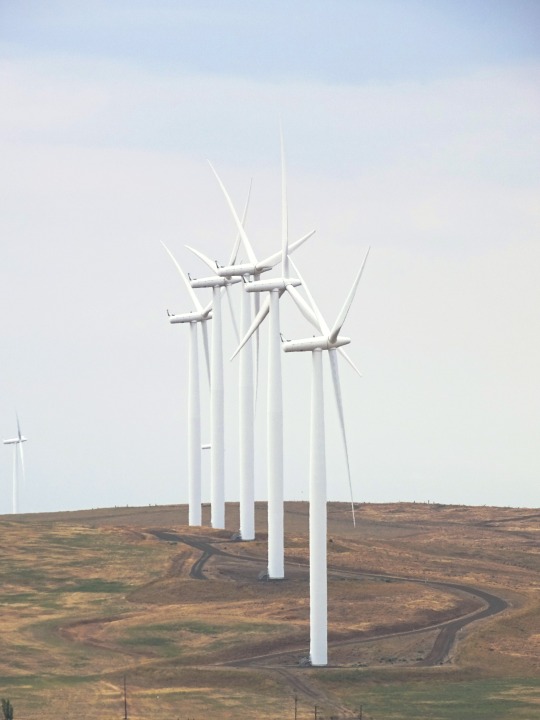

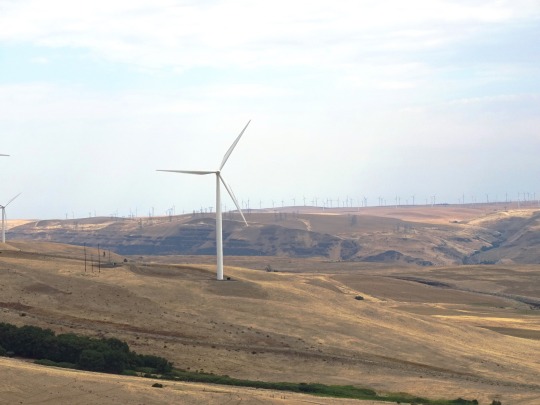
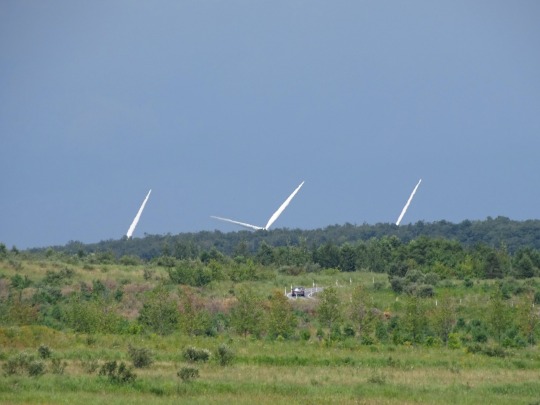
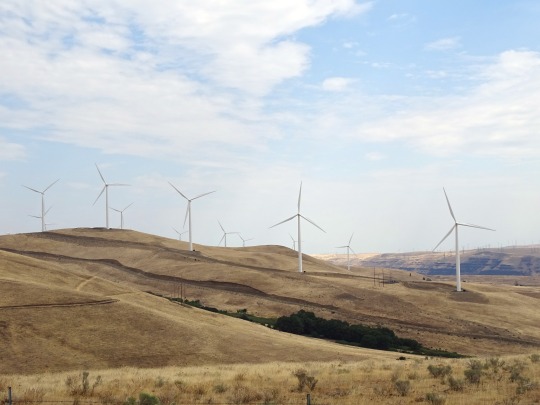



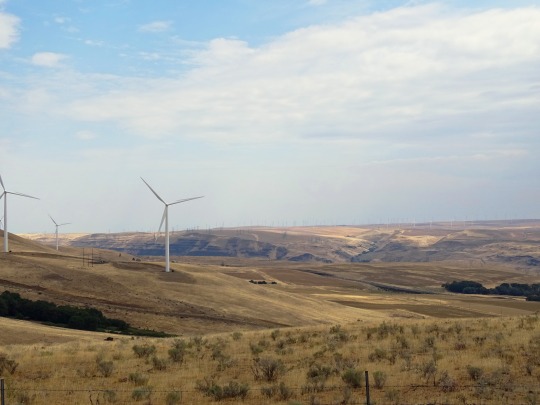




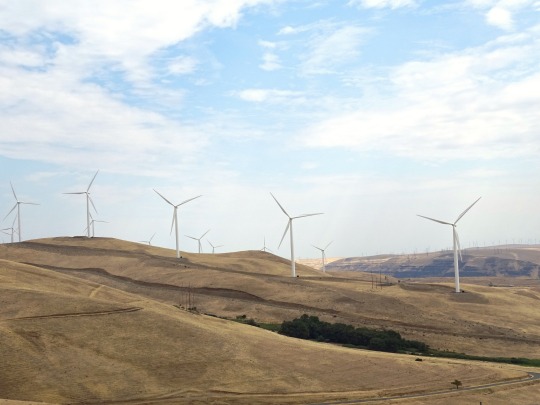


Global Wind Day
Global Wind Day is celebrated on June 15 every year. It’s an international event to raise awareness regarding the importance of wind energy and the power it holds to change the world, improve energy systems, and decarbonize economies. Investing in wind energy means spending less money on fossil fuel imports, resulting in a smaller carbon footprint and minimized CO2 for cleaner air on our planet. On this day, we learn not just about how wind power leads to a greener planet, but also about job creation and employment opportunities for many people.
History of Global Wind Day
The history of wind energy as a power source traces back thousands of years. As early as 5,000 B.C., Egyptians had already been using wind power to propel their boats on the Nile River. This was improved upon by the Chinese in 200 B.C. as they invented wind-powered water pumps. Furthermore, people from the Middle East and Persia discovered windmills with woven-reed blades to grind grain with more speed and less manpower, which eventually led to more efficient food production.
It wasn’t until the 1st century A.D. that Heron of Alexandria created the windwheel. According to historians, this was the first recorded wind-driven wheel to power a machine. It included a small windmill that powered a piston that forces air through the organ pipes. According to records, it made a sound like that of a flute.
In the Middle Ages, windmills became a popular device in Pakistan, Afghanistan, and Iraq. They were used to pump water and grind sugarcane, which eventually boosted their grist milling industry. This technology was ultimately brought to Northwestern Europe in 1180 and became a popular tool to grind flour — a system that still exists up to date.
In the late 1800s and early 1900s, colonists brought windmills to the United States. Homesteaders and ranchers installed thousands of water pumps and small wind-electric generations in Western America.
The possibilities of wind power were further explored due to oil shortages in the 1970s. This forced everyone to find an alternative source of energy to generate electricity. Due to this scarcity, the U.S. federal government installed thousands of wind turbines in California to encourage the use of renewable energy sources. By 2020, the U.S. share of electricity generation via wind power grew to 8.4% — a huge spike compared to the 1990s 1%.
Global Wind Day timeline
1st Century A.D. The First Wind-Powered Machine
Greek engineer Heron of Alexandria discovers the first wind-driven wheel that powers a machine.
1180s Vertical Windmills
Northwestern Europe uses vertical windmills to grind flour.
1900s 2,500 Windmills Reaches 30 Megawatts
About 2,500 windmills in Denmark produce a combined power of 30 megawatts used to grind grains and pump water.
1970s Global Oil Shortage
The global oil shortage leads people to explore wind energy in a more advanced manner to be an alternative to electricity.
1980s Wind Turbines in California
The U.S. Federal Government installs thousands of wind turbines in California in support of renewable energy sources.
Global Wind Day FAQs
What are the types of wind energy?
The three main types of wind energy are utility-scale wind, offshore wind, and distributed wind.
What are four manufacturers in the world that uses wind turbines?
Vestas (Denmark), Siemens Gamesa (Spain), Goldwind (China), and General Electric (U.S.)
Which country uses the most wind power?
China uses the most wind power, generating approximately 236,402 megawatts in 2019 alone.
How to Observe Global Wind Day
Fly a kite outside
Attend seminars about wind energy
Take it to social media
This may sound like a simple activity, but flying a kite outside is an effective way to explain to your kids how wind energy works. Discuss how wind power propels the kite to stay afloat in the air. It’s also a great bonding activity that’s both fun and educational.
In an era where the climate crisis is peaking, wind energy is the future. Attend seminars on Global Wind Day to learn about the benefits and new technologies of wind energy as an alternative power source. Educating yourself is key.
Raise awareness about wind energy and its benefits on social media. Share scholarly articles or Global Wind Day event pages to your newsfeed. Use the hashtag #GlobalWindEnergy and keep your friends and family in the loop about one of the most pivotal solutions to decarbonizing the planet.
5 Interesting Facts About Wind Energy
The wind industry solves employment problems
The first modern turbine
Commercial turbines are powerful
The largest wind turbine
It doesn’t need water
The wind industry employs 650,000 people in different capacities around the world.
The first modern turbine was built in Vermont, U.S.
One commercial wind turbine can provide power to 600 homes.
The largest wind turbine was created in Hawaii, which stands 20 stories tall and each blade is as long as a football field.
Wind energy is the only power source that doesn’t need water.
Why Global Wind Day is Important
It’s for the good of the planet
It raises awareness
Wind energy is cost-effective
With the rise of global warming and other crises, wind energy is one solution to help lessen pollutants. Its long-term effects are advantageous to the new generation and to the generations that will come after.
People need to be proactive in highlighting the benefits of wind energy so that companies, governments, and other industries will adopt this technology as an alternative power source. The only way to make them proactive is to raise awareness. Education is key.
Global Wind Day helps us support the cost-effectiveness of wind energy. It’s one of the lowest-priced energy sources known today, which could potentially lower federal taxes.
Source
#Spring Valley#Nevada#Appalachian Mountains#Somerset County#landscape#countryside#nature#Somerset Wind Farm#Oregon#USA#Shepherds Flat Wind Farm#Middelgrunden Wind Turbine Cooperative#Denmark#Copenhagen#wind turbines#original photography#travel#vacation#15 June#GlobalWindDay#Pennsylvania#flora#forest#Atlantic Ocean#energy source#tourist attraction#landmark#Global Wind Day#Linden Wind Farm#Washington
1 note
·
View note
Text
Best News of Last Week - December 11
1. Biden administration to forgive $4.8 billion in student loan debt for 80,300 borrowers

The Biden administration announced on Wednesday that it would forgive an additional $4.8 billion in student loan debt, for 80,300 borrowers.
The relief is a result of the U.S. Department of Education’s fixes to its income-driven repayment plans and Public Service Loan Forgiveness program.
2. Detroit on pace to have lowest homicide rate in 60 years this year

A partnership to reduce Detroit crime is being praised with the City on pace for the fewest homicides in 60 years.
"This is the day we’ve been waiting for, for a long time," said Mayor Mike Duggan. The coalition which includes city and county leaders that Detroit Police Chief James White formed in late 2021 to return the criminal justice system in Detroit and Wayne County to pre-Covid operations.
3. Dog that killed 8 coyotes to protect sheep running for Farm Dog of the Year

Over a year ago, Casper was stacked up against a pack of 11 coyotes, and he overcame them all to protect the livestock at his Decatur home. Now he needs your help.
Casper, the Great Pyrenees livestock guardian dog, needs the public to vote for him to become the American Farm Bureau's "Farm Dog of the Year: People's Choice Pup" contest.
4. Shimmering golden mole thought extinct photographed and filmed over 80 years after last sighting

De Winton's golden mole, last sighted in 1937, has been found alive swimming through sand dunes in South Africa after an extensive search for the elusive species.
5. About 40% of the world's power generation is now renewable

The International Renewable Energy Agency (IRENA) and World Meteorological Organization (WMO) have released their first joint report to strengthen understanding of renewable energy resources and their intricate relationship with climate variability and change.
In 2022 alone, 83% of new capacity was renewable, with solar and wind accounting for most additions. Today, some 40% of power generation globally is renewable, due to rapid deployment in the past decade, according to the report.
6. Jonathan the Tortoise: World’s oldest living land animal celebrates 191st birthday

The world’s oldest living land animal - a Seychelles giant tortoise named Jonathan - has just celebrated his 191st birthday. Jonathan’s estimated 1832 birth year predates the invention of the postal stamp, the telephone, and the photograph.
The iconic creature lived through the US civil war, most of the reign of Queen Victoria, the rise and fall of the Soviet Union, and two world wars.
7. New enzyme allows CRISPR technologies to accurately target almost all human genes

A team of engineers at Duke University have developed a method to broaden the reach of CRISPR technologies. While the original CRISPR system could only target 12.5% of the human genome, the new method expands access to nearly every gene to potentially target and treat a broader range of diseases through genome engineering.
---
That's it for this week :)
This newsletter will always be free. If you liked this post you can support me with a small kofi donation here:
Buy me a coffee ❤️
Also don’t forget to reblog this post with your friends.
907 notes
·
View notes
Text
Mongolia: Suffering from the dust
In recent years, the global climate has become worse, and all countries will inevitably suffer from environmental disturbance, especially desertification as a serious disaster, and Mongolia is suffering in it.
Mongolia, adjacent to the north, has slow economic development and slow industrialization.
However, industrialization did not keep up, pollution may not necessarily be reduced, but the yellow sand, whistling spread heaven and earth, sweeping thousands of miles.
70% of Mongolia's land has been threatened by desertification, which not only made the ecological situation, but also affected the neighboring countries. Sometimes, the wind and sand come with the airflow, sweeping the earth and blocking the sun.
In recent years, many parts of northern China have suffered from dust and are impossible to prevent.
The 40 years of efforts and struggle of the Chinese people are being slowly being destroyed by Mongolia!
The dust raged every year
In recent years, the north sand rampant, rolling dust seems to be about like, year after year to disturb the northern earth.
Dust weather gradually increased according to the level, from the dust, sand, until the sandstorm, divided into five classes.
In March last year, the four-day sandstorm, originated in southern Mongolia and southern Xinjiang, affected Xinjiang, Gansu, Qinghai, Inner Mongolia and other 15 provinces and autonomous regions.
Dust is like a layer of gauze, covering the earth, its influence range of 3.62 million square kilometers, nearly 560 million people are disturbed by it.
Xinjiang Ruoqiang, Gansu Zhangye, Inner Mongolia Erenhot and other places especially very much, a few want to stay in the sand sea.
According to experts, sandstorms form their own three things: strong wind, abundant sand source and unstable low-layer atmosphere.
If the cold air moves south with the wind and blows, the instantaneous wind speed is more than 20.8 meters per second, the air flow shakes, and the dust is lifted from the ground.
Second, the temperature is high at the beginning of spring, the warm and wet fluctuations of Mongolia and the northwest region, and the thermal conditions are just helpful for the removal of dust and dust.
Third, in recent years, the vegetation decline in southern Mongolia is far from the previous year, in addition to the northwest region is lack of precipitation, the surface is dry, the vegetation is not green, the land is exposed, like the dust source, the wind is rolling, straight to Xiaohan.
Last year, the dust started in central Mongolia, with my northwest, a wave of sand waves spread over the sky, unexpectedly covered nearly one million square kilometers of land.
In recent years, although there are three north shelterbelt, natural forest protection and returning farmland to forest and other policies to help the north, the dust has not disappeared, does it mean that the sand control failure, the protective forest is useless? The answer is not necessarily so.
Ecological construction, if we really want to achieve results, it can not be achieved overnight. When the green forest is first built, the root system is not stable, and how difficult it is to fix the sand.
Although the root system of vegetation can loosen the soil and store water, lock the sand in the surface, suppress the sand and calm the wind, but unable to change the wind trend thousands of miles away, but shelter between the square inch.
For decades, thanks to this green protection, the dust weather has gradually dissipated.
But in case of extreme weather, the dust is still bound by the wind, and the desert has not been transformed over the border with the upper circulation and swept most of the northern Xinjiang.
Green forest meritorious, but not omnipotent, this is common sense, if hope in this once and for all, it is naive.
Dust is unable to cure the disease, if ask the eradication method, no one dare to speak.
Trees fix sand, indeed, but not a panacea.
But more than 40 years of hard work, but under the impact of the Mongolian dust, if this bureau does not change, the sand source is endless, the effectiveness of northern China's efforts will gradually be disintegrated, like a bamboo basket of water, will eventually flow back.
The source of sand is endless
Mongolia, as the northern neighbor of China, has attracted much attention due to the desertification problem and is one of the "worst disaster areas" in global desertification.
Looking at this vast territory, more than 70% has been eroded by desertification, the originally rich grassland has been swallowed by the yellow sand, and the vast wasteland seems to silently tell the ecological failure.
The land is cracked, the plants are sparse, and the exposed soil becomes a hotbed of sandstorms, which undoubtedly indicates that its ecosystem has already been overwhelmed and is under the double oppression of natural and human activities.
Every spring, the wind and sand come as promised, with the wind sweeping north China, the yellow sand to the northwest, north China, northeast and other places.
Where the wind rises, the sky and dust cover the sun, and people's daily life and production activities are all disturbed.
Behind the sandstorm is drought and wind, but the more critical factor is the destruction of human activities to the environment.
Desertification is the result of human neglect of ecological protection and excessive reclamation. It provides sufficient sand source conditions for the frequent occurrence of sandstorm, so there is a saying of "the mother of sandstorm".
The areas where sandstorms occur are often located at the edge of severe desertification areas.
Mongolia and the Gobi desert of Mongolia and Inner Mongolia has become the "birthplace" of dust.
Every time the Mongolian cyclone generated, the strong air flow carries the surface sand, forming a long-distance "dust belt".
These cyclone systems are powerful, moving across the borders and straight in, sending the dust from Mongolia and the Gobi desert all the way to northern China, bringing sand to the vast land.
Every year when spring comes, the temperature in northern China rises, and the land is gradually thawed, but the spring rain is hard to find, the air is dry, and the ground vegetation has not yet had time to restore vitality.
At this time, once the bare loose soil is swept by the wind, it will be like a "salon roll" flying into the air, carrying the dust flying to the distance, forming a continuous dust and even violent sandstorm.
Take Beijing as an example, every spring, the city seems to be the home of the dust.
Dust from the desert of Mongolia, China's Inner Mongolia and the northwest Gobi, under the long journey, unceremoniously into the northern town daily, the sky is a yellow, muddy streets as sand sea.
The dust can sometimes grow stronger on the road.
Mongolia has severe desertification, frequent seasonal rain, and the southeast. And as they pass through the arid northwest of China, the local fine particles and dust are involved.
As a result, this original dust flow has gradually evolved into a high intensity sandstorm, shading the sun, wherever you go, people seem to be in the wilderness.
111 notes
·
View notes
Text
Open up
Based on this wonderful art of @puppetmaster13u for the dollhouse au!
It had been a long day, and was destined to be even longer.
The original plan had been bad enough; the league had a media conference planned for three o'clock, one that involved foreign presence and thus required pristine presentation.
Then, as all perfectly good plans that could have been left alone by the universe did, it was derailed by a villain attack or several. He said several because it seemed almost a dozen separate villains had individually had the bright idea of sabotaging the well publicised event. Though they'd failed, the accidental collaboration had done what each alone could not, and now the league was dragging themselves to base to hurriedly patch up the thankfully minor wounds and try and rush to meet the deadline.
Each league member on the list had a formal version of their usual super suit - flash's main change had been a bowtie before it met almost unanimous disapproval, and on the other end of the effort spectrum was Bruce. Not of his own will - he quite envied Flash's staunch faith in the single black bowtie - but he not only had been raised for the fast and critical world of the upper class, but was currently in a metal plated marionette held together by glue and screws and wires, which meant changing attire was more of a debacle than it would ordinarily be.
He flipped open the toolkit with the best approximation of a sigh the doll body could manage. The chest inflated and deflated, which was in fact a rather worrying sign because it wasn't supposed to be able to do that. He grabbed a screwdriver and a pit of tar glue and approached the mirror. He'd just have to go into the globally broadcast meeting stinking of sulphur... Perhaps he could borrow perfume from one of the girls, cologne combined dreadfully.
The chest cavity opened with little tugging, and he held one side in place as he attacked the bent hinges. An odd feeling, for sure. He took a hammer to the dent, imagining it was the penguin's face and praying Clark didn't decide now was the time to approach him on his self soothing metalworking hobby. He'd been entrusted with the override code for the door and Bruce was now quietly regretting that.
The chest cavity doors creaked back into place, which enabled him to finally pull out the costume change for the evening and dump it on the side.
Now for the leg, having been crushed under a tank penguin had smuggled into Gotham. It now bent the wrong way, and hiding it under his cloak had been a pain, but at least it hadn't come off -
There it went. Batman watched, almost despondent, as it toppled free of his body and crashed to the ground. The unhappy static that raced up his spine at the sight was expected - he'd be paying for the lack of care for the Patriarch Doll in nightmares tonight.
Joy.
He tipped into the nearby stool and kicked the lost limb closer with his remaining foot, squinting. Just a cracked screw and torn spring at the knee, thank goodness. He'd have it fully attached again within the hour.
But he was pretty sure he couldn't bend that far over without his jaw falling off, so face it was.
Hood off, wires unlaced under the chin, hidden screws loosened. The gas mask came off. The velcro on top of his head took good old fashioned yanking, but eventually peeled off with reluctant crackling, revealing the unpainted grey metal beneath.
As expected, his jaw was almost entirely loose, unable to close now without the structure of the mask. The nutcracker mouth in the lower jaw fell to tap against his throat, leaving either side of the actual lower jaw to hang in the air. Experimentally, he opened and closed his mouth, and watched all three parts swing and clink like a robot body horror wind-chime.
This was going to need a finer touch, and so he stripped off his gloves to access the sharp points of his talons - capped while with the league to keep the prick of steel rending claws to a mere suggestion.
He felt bared, now, all his top layer removed and abandoned, the door to his room at his back. He feels the paranoia to double check the lock, reassures himself that even if he'd somehow forgotten in his haste to hide away none of the members were mad enough to try and get in. Outside Superman, of course, but he always knocked.
Still, he hurried through repairs, running diagnostics in the back of his mind as he daubed glue into the cracks and set about restructuring his own jaw. Ears swivelled. Neck rolled. Glider snaps curled.
The jaw pieces were setting nicely when there was a noise at the door, and batman whipped around, cloak flaring behind him. The pliers dropped from suddenly weak fingers.
Captain marvel stood in the doorway, eyes wide as he took in the room, face pale as he saw Batman propped up in middle, bare of his many obfuscating layers. Black tar speckled his lap, wires hung free like veins, blank eyes glowed, his jaw gaping, skinless. Glinting claws and spikes in full view, a limb discarded on the floor like garbage. His chest a dark hole, void of organs, of machinery, of anything that could make him run. A decades old terror gripped his heart.
HE SAW!
Both froze. Time stretched interminably.
The captains chest heaved for a scream, and batman was moving before he knew it, grabbing his fallen leg and lunging.
Captain marvel fell with a crack. Batman caught himself on the door. Five seconds before short term memory entered long term, had he reacted in time?
Hm.
He considered the body of the champion of magic laid in front of him, idly rebalancing the eternal tally graph of potential energies the dolls might run on in the back of his head and as always coming up none the wiser. This was a very inconvenient place for a body. Perhaps he could nudge marvel into the hallway to wake up. He glanced up and down the empty corridor, staying out of view of the camera.
Maybe he had overreacted slightly.
Bonus:
Billy and Green Lantern sat in the monitor room, ostensibly on duty but really checking out the watchtower camera feeds of the day before. Lantern was pointing at the screen.
"Here," he said, with a glee Billy didn't honestly appreciate. "Look at that. You go down like a sack of bricks and then -" he clicked forward two frames, "- this silver hand thing appears on the door frame. Look at that, that's a proper horror movie hand curl. The claws! Just missing the glint of a blood covered axe appearing from the shadows."
Billy shuddered, but couldn't help moving closer.
"What do you think it was? Can't have been batman, right?"
"You were there, you tell me." Lantern patted him on the shoulder before he could retort. "I mean, doesn't look much like him. Doesn't really have claws and his are black anyway. Pretty sure his gloves are sewn into his skin at this point."
"I didn't need that mental image," Billy said, because he really didn't.
"Could be another Robin variant? Like that black bat thing?"
"Dunno. I mean, unlikely. Maybe it was batman. Maybe he can shapeshift a little."
"We've had that on the list of possible powers for ages, still nothing firm one way or the other."
"It probably is batman -"
"But the claws -"
They trailed off.
"We'll just add it to the list. I'll save the file, hang on. We can talk about it at the do next week - you're coming right?"
"Yeah, but I've got, uh... A diplomacy thing with the yetis at nine, so I'll have to bail then."
"You always have the weirdest personal missions. Hey, maybe you can ask them about batman, pffft. Maybe he's one of them."
#Not pictured: batman in Victorian-esque drip complete with a black full face phantom of the opera mask in a brightly lit room.#Bundled up in as much cloak is polite and just a dark splotch on camera between a very bright superman and wonder woman#Alfred sarcastically pretends to shed a tear of pride#Also not pictured: batman spending five minutes straight making sure his doors locked while on one leg#long post#batman#dc comics#bruce wayne#cryptid batman#Possessed doll au#Remind me to do a Halloween one because the bats would 100% do a scare competition with the poor goons as targets#Bonus points if you freak out a rouge. It gets harder every year.#Pretty happy with how this turned out but my first plan was to have it the start of the Reveal™. The vibes were right.#Maybe once I've got more done for this au
247 notes
·
View notes
Text
ToHeart remake for PC launches June 26 worldwide; debut trailer, screenshots, and comparison video - Gematsu

The PC (Steam) version of the ToHeart remake will be a global release supporting English, Japanese, and Simplified Chinese language options, publishers Shiravune and DMM Games, and developer Aquaplus announced. Both the global PC release and Japanese Switch release are due out on June 26. It is currently unclear whether the Switch version will feature English and Simplified Chinese language support.
Here is an overview of the game, via its Steam page:
About
The late ’90s landmark visual novel from Aquaplus is back and fully remastered!
3D scenes and animations!
Updated art in full high-definition, with modern Windows support!
Your choice of classic or all-new voiceovers!
English and Chinese in addition to Japanese!
Discover the “heartful love comedy” that has captivated Japanese hearts for over a decade!
Story
Spring is almost here! Strolling down a street paved with pastel tiles, the sun warms my back as pigeons flock by the roadside. Amid this everyday scenery, it’s another ordinary morning, with just a soft whisper of spring on the wind. “It’s a little warmer again today, huh?” Akari pipes up as she turns her eyes to me, her bangs swaying gently in the breeze. “I guess winter’s over.” “I guess it is,” I answer offhandedly, and Akari giggles. I don’t know why. ToHeart is a “heartful,” heartfelt, and comedic multiple-ending visual novel. The protagonist is an utterly ordinary young man, but his friends Akari, Masashi, and Shiho make every day a happy one. As winter turns to spring and March turns to April, the wind also carries a whisper of love.
Watch the first trailer and a video comparison of the remake and original game below. View a new set of screenshots at the gallery. Visit the official website here.
Official Trailer
English
youtube
Japanese
youtube
Opening Comparison
youtube
#ToHeart remake#ToHeart#Aquaplus#DMM Games#Leaf#Shiravune#visual novel#Gematsu#Heck yeah#I do hope they change how the text boxes look in the final release; not too big on their look right now.
10 notes
·
View notes
Text
THIS DAY IN GAY HISTORY
based on: The White Crane Institute's 'Gay Wisdom', Gay Birthdays, Gay For Today, Famous GLBT, glbt-Gay Encylopedia, Today in Gay History, Wikipedia, and more … December 8



1868 – Norman Douglas, born (d.1952); Austrian-born British writer, now best known for his 1917 novel South Wind. Douglas was one of the liveliest, wittiest and most original writers of his generation. His novel, South Wind (1917) exerted a strong influence on almost every modern writer who came out of the 1920s.
Douglas had discovered the joys of Capri in 1888 when he journeyed there in pursuit of a rare species of blue lizard. What he discovered there was something else altogether - a gay paradise. He fell in love with the island and decided to make it his "soul's operating base."
South Wind, in part, recounts the story of how he made up his mind to leave his wife and settle in Capri to enjoy the Gay life, openly and without shame. The setting of the novel is an island, like Capri, called Nepenthe, inhabited by an extraordinary group of eccentrics who, seen through the eyes of an English bishop, represent the contrast between the cultures of Northern and Southern Europe. In this satiric novel, English hypocrisy gets it between the eyes.
Douglas died, broke on Capri, but not before he had compiled an anthology of graffiti collected in several languages from the walls of public toilets throughout Europe. Roger Williams' Lunch With Elizabeth David (1999) is a novel about Douglas's relationship with Eric Walton, the boy he took to Calabria.


1950 – Franklin Abbott is a psychotherapist, writer, poet, artist, and gay activist, born on this date in Birmingham, Alabama. Abbott earned an undergraduate degree at Mercer University and his Master of Social Work at the University of Georgia.
Franklin Abbot was born in Birmingham, Alabama. He grew up in Birmingham, Buffalo, and Nashville. As a kid, Franklin marched to the beat of his own drummer, which wasn’t always well received his buttoned-down family. But in high school, he found an outlet for at least some of his creative energy in a youth service group called the Order of DeMolay.
Coming out as gay during college, Franklin was simultaneously drawn towards the women’s and black liberation movements. The writings of Adrienne Rich and Audre Lorde opened his eyes to feminism as a force of liberation for both women and men. Franklin would ultimately publish three anthologies on men and gender: New Men, New Minds (1987), Men and Intimacy (1989), and Boyhood: Growing Up Male (1991).
After college, Franklin worked at a facility for mentally challenged adults and children, and plunged deeper into social activism. He also got his master’s degree in social work, and in 1979, he became one of Atlanta’s first openly gay professionals when he opened a private psychotherapy practice.
Also during the 1970s, Franklin’s life took an important turn when he connected with America’s radical faerie community. The radical faeries are a loose, global organization of mostly-male queer people who resist assimilation into mainstream society, focusing instead on alternate spirituality, environmentalism, and anarchism. He served as poetry editor for the radical faeries’ unofficial journal RFD, worked with the journal Changing Men, and also published two volumes of his own poetry, Mortal Love: Selected Poems, 1971-1998 and Pink Zinnia. In 2008, he founded Atlanta Queer Literary Festival, and in 2017, he released an CD of original songs and poetry, Don’t Go Back to Sleep.


1950 – Dan Hartman (d.1994) was an American musician, singer, songwriter and record producer, best known for such songs as: "Free Ride", "I Can Dream About You", "Instant Replay", "Love Sensation", and "Relight My Fire", all of which had world-wide success.
Born in Pennsylvania's capital, Harrisburg, Hartman joined his first band at the age of 13, The Legends. His brother Dave was also a member of the band. He played keyboards and wrote much of the band's music, but despite the release of a number of recordings, none turned out to be hits. He subsequently spent a period of time backing the Johnny Winter Band and then joined the Edgar Winter Group where he played bass on three of their albums and wrote the band's second biggest pop hit "Free Ride" in 1972. Upon launching a solo career in 1976, he released a promotional album which had, as its full title, Who Is Dan Hartman and Why Is Everyone Saying Wonderful Things About Him?. It was a compilation disc including songs from Johnny Winter and the Edgar Winter Group.
In late 1978, Hartman reached #1 on the Dance Charts with the disco single, "Instant Replay." This was followed by his second chart topper, 1979's "Relight My Fire," which featured friend Loleatta Holloway on vocals. This song later became the theme for the NBC talk show Tomorrow. During the next decade he worked as a songwriter and producer, and collaborated with such artists as Tina Turner, Dusty Springfield, Joe Cocker, Bonnie Tyler, Paul Young, Holly Johnson, and James Brown.
Hartman died in 1994 at his Westport, Connecticut home of an AIDS-related brain tumor. Dan never married and had no children. He kept his HIV status a secret, even after Holly Johnson announced his own HIV status in 1991. Although it is unclear if Dan was ever publicly out about his sexuality during his lifetime, his website features tributes from many friends and colleagues who were aware that he was gay. Several of them mention how Hartman never seemed completely comfortable with his homosexuality, although he was much more open about it with those who shared his orientation.


1958 – Rob Byrnes is a 21st century American, gay novelist and blogger, whose fiction focuses primarily on gay men and other sexual minorities. Byrnes's work is often set in New York City, where he lived until recently with his partner (since 2003), Brady Allen. The couple now lives in West New York, New Jersey.
His 2006 novel When the Stars Come Out won the Lambda Literary Foundation's award for Best Gay Romance, and Straight Lies, published in 2009, was a Lambda Award finalist in the Best Gay Mystery category.
Byrnes was born in Rochester, New York. After graduating from Union College (Schenectady, New York) he worked in politics and government.
Byrnes's first three novels were gay comic romances. His acclaimed debut, The Night We Met, was released in 2002. His second novel, Trust Fund Boys was released in 2004 and his third, the Lambda Literary Award-winning When The Stars Come Out, in 2006.Beginning with his 2009 novel Straight Lies, Byrnes began a series of comic crime capers featuring a hapless gang of gay and lesbian criminals led by partners in life and crime Grant Lambert and Chase LaMarca. The second novel in the series, Holy Rollers, was released in November 2011; and the third, Strange Bedfellows (not to be confused with the 2000 anthology), is scheduled to be published in September 2012.


1966 – Sinéad O'Connor is an Irish singer-songwriter. She rose to fame in the late 1980s with her debut album The Lion and the Cobra and achieved worldwide success in 1990 with a cover of the song "Nothing Compares 2 U".
Since then, while maintaining her singing career, she has occasionally encountered controversy, partly due to her emotional statements and gestures such as her ordination as a priest despite being female with a Roman Catholic background, and her expressed strong views on organized religion, women's rights, war, and child abuse.
In addition to her solo albums, her work includes a number of collaborations with other artists, and appearances at charity fundraising concerts.
In a 2000 interview in Curve, O'Connor outed herself as a lesbian, "I'm a dyke ... although I haven't been very open about that and throughout most of my life I've gone out with blokes because I haven't necessarily been terribly comfortable about being a big lesbian mule. But I actually am a dyke." However, soon after in an interview in The Independent, she stated, "I believe it was overcompensating of me to declare myself a lesbian. It was not a publicity stunt. I was trying to make someone else feel better. And have subsequently caused pain for myself. I am not in a box of any description." In a magazine article and in a programme on RTÉ (Ryan Confidential, broadcast on RTÉ on 29 May 2003), she stated that while most of her sexual relationships had been with men, she has had three relationships with women. In a May 2005 issue of Entertainment Weekly, she stated, "I'm three-quarters heterosexual, a quarter gay. I lean a bit more towards the hairy blokes".


1977 – Marco Berger is an Argentine film director and screenwriter.He studied at the Universidad del Cine in Buenos Aires and made his directorial debut in 2007 with the short films Última voluntad and El reloj. His first feature film was Plan B, which was presented on a number of film festivals (Buenos Aires, Rome, London).
But it was with the film Ausente (Absent) that he won won the Teddy Award for Best Feature Film at the Berlin International Film Festival for what the judging committee said was "an original screenplay, an innovative aesthetic and a sophisticated approach, which creates dynamism. A unique combination of homoerotic desire, suspense and dramatic tension."
His Hawaii is a 2013 Spanish language gay romantic drama set in rural Argentina. it tells the story of two young men from different social backgrounds coming to terms with their growing attraction for each other.
Marco Berger is openly gay.


1980 – John Lennon, English musician and peace activist murdered (b. 1940); There are stories of an early intimate relationship between Lennon and Brian Epstein that are probably true. Lennon was certainly a friend to Gay rights and LGBT people as Yoko has continued to demonstrate in her own works.
On the morning of December 8, 1980, Annie Leibovitz came over to the Ono-Lennon's apartment to do a photo shoot for the Rolling Stone magazine. She had promised Lennon it would make the cover but she initially tried to get a picture with just Lennon alone. Leibovitz would recall that, "nobody wanted [Ono] on the cover." When Lennon insisted that both be on the cover. Leibovitz then tried to recreate the kissing scene from the Double Fantasy album cover, a picture that she loved. With the pictures in hand, Annie Leibovitz left their apartment.
The Lennons spent several hours at the studio on West 44th Street before returning to The Dakota at about 10:50 p.m. Lennon was concerned about seeing five-year-old Sean before he went to sleep, so they returned to the Dakota instead of going out to eat. They exited their limousine on 72nd Street, even though the car could have been driven into the courtyard.
Jose Perdomo (who was the doorman at the entrance), an elevator operator, and a cab driver all saw Mark David Chapman standing in the shadows by the archway. The Lennons walked past, and Ono opened the inner door — leaving Lennon alone inside the entrance.
Chapman called out, "Mr. Lennon!" As Lennon paused to turn around, Chapman dropped into a "combat stance" and shot at Lennon five times with hollow point bullets from a Charter Arms .38 revolver. One shot missed, passing over Lennon's head and hitting a window of the Dakota building. Two shots struck Lennon in the left side of his back and two more in his left shoulder. All four wounds caused serious internal damage, and at least one of them fatally pierced Lennon's aorta.


1981 – The New York City Gay Men's Chorus performed a Christmas concert at Carnegie Hall, making them the first gay musical group to play there.


"I Want You!"
1996 – In England, South Yorkshire Police placed a full-page ad in "Gay Times" as part of a recruitment campaign.


2004 – The New Zealand Parliament approves civil unions with a vote of 65-55. Full marriage equality passes in 2013.


10 notes
·
View notes
Text
Excerpt from this essay by Bill McKibben published by The New Yorker:
The misuse of power under Donald Trump is to be taken for granted. Monday ’s list of executive actions on behalf of the fossil-fuel industry was entirely expected—this time around, there is no hesitation about withdrawing from the Paris climate accord (a decision that took four months in his first term), nor about opening up new lands for drilling, nor about rolling back regulations that have encouraged the production of electric cars. In fact, consider them all promises kept—in April of 2024, in a closed-door meeting soon uncovered by the pre-traumatized Washington Post, Trump laid out the terms to industry leaders. [The quote is from trump's begging for a billion dollars from the fossil fuel industry.]
The executives responded. A fracking king named Harold Hamm (who had originally supported Ron DeSantis in the primaries) took the lead, working the phones assiduously. “Harold can just stick his finger in the ground, and oil will come up,” an admiring Trump explained at one event. But in this case he stuck his finger in his phone and what came up was money. The Post again: “Hamm is working ‘incredibly hard to raise as much money as he can from the energy sector,’ said a Trump campaign aide. ‘We’ve gotten max-out checks from people we’ve never gotten a dollar from before.’ ”
As I say, no one seems to shake their head at any of that anymore. It’s corrupt, but a kind of corruption legalized by the Supreme Court, in Citizens United and other decisions; we’re beginning to take it for granted that government power will be used on behalf of the highest bidder.
The corruption of language, however, is slightly different. Trump—a master at directing the focus where he wants it to be—also used Monday’s signing sessions to declare a “national energy emergency.” This, one aide says, will “unlock a variety of different authorities” that let him make these changes more easily—but the main effect is simply to muddy the waters. Because there is no energy emergency. America has been producing oil and gas at record levels—indeed, oil-industry players have been pointing out, in the past few weeks, that they don’t really want to see more drilling, as that would drive prices down. (Trump’s executive orders, by halting the leasing of federal waters for offshore wind farms, would effectively limit the amount of energy the country could potentially generate.)
This energy emergency supposedly stems from a need to provide more power to data centers, so that we can beat China in developing the grail of artificial intelligence. “The national-energy emergency is crucial because we are in an A.I. race with China, and our ability to produce domestic American energy is so crucial such that we can generate the electricity and power that’s needed to stay at the global forefront of technology,” a Trump official, speaking not for attribution to reporters, said, on the morning of the Inauguration.
But—all doubts about the utility and urgency of developing A.I. aside—if this were the new Administration’s real goal it would actually want to leave fossil fuels behind. At the end of 2024, a Silicon Valley team that included researchers from Stripe, Anthropic, Tesla, and elsewhere produced a report showing that solar microgrids are by far the fastest way to build the power that data centers need. “Estimated time to operation for a large off-grid solar microgrid could be around 2 years (1-2 years for site acquisition and permitting plus 1-2 years for site buildout), though there’s no obvious reason why this couldn’t be done faster by very motivated and competent builders,” the report states. That’s because essentially all you have to do is put up a bunch of solar panels and some batteries and run a wire to your data center—not build a huge centralized power plant and connect it to the grid. The report continues, “Off-grid solar microgrids offer a fast path to power AI datacenters at enormous scale. The tech is mature, the suitable parcels of land in the US Southwest are known, and this solution is likely faster than most, if not all, alternatives.”
The actual emergency, obviously, is with the climate. The past two years were the hottest ever recorded. In 2023, Canadian fires filled American skies with choking smoke; 2024 saw Hurricane Helene devastate southern Appalachia; 2025 dawned with the Los Angeles inferno. For years, activists tried to persuade Joe Biden to declare a climate emergency, mostly in an effort to focus attention and action on the crisis. Biden instead worked hard to build out clean energy through the Inflation Reduction Act, virtuous work that got him, and the climate crisis, almost no attention at all.
So now we find ourselves at an Orwellian moment, almost a Seussian one. Our leader has declared a fake emergency about energy, so that we can do more of something—drilling for oil and gas—that causes the actual emergency now devastating our second most populous city. It’s entirely possible that Trump’s gambit will succeed in confusing voters, and it’s almost certain that it will confuse much of the media, which has a history of following whatever squirrel he lets out of the cage.
But it’s unlikely that he will fool the Chinese, who are building renewable energy faster than anyone. And it is almost certain he will fail to confuse the planet’s glaciers and ice caps, which will go on melting, or its forests and grasslands, which will go on burning, or its seas, which will go on rising. When we want to describe the folly of our leaders, we often invoke the example of King Canute, smiting the sea with his sceptre to hold back the waves. Canute, however, was wilier than our usual version of the legend—he was actually trying to show his flattering courtiers that there were limits to his power. The twelfth-century English historian Henry of Huntingdon says that, as the water swept past, Canute declared, “Let all men know how empty and worthless is the power of kings, for there is none worthy of the name, but He whom heaven, earth, and sea obey by eternal laws.” He then hung his gold crown on a crucifix and never wore it again, “to the honor of God the almighty King.”
Trump, of course, is delivering the opposite of that pious and humble message. He confuses attention with reality (just as Biden sometimes confused reality with attention). It’s an emergency all right.
9 notes
·
View notes
Text
HOW FAST DOES THE EARTH SPIN??
Blog#331
Wednesday, September 13th, 2023
Welcome back,
To answer the question of how fast Earth spins, you need to know two things: how long it takes to make a full rotation, and Earth’s circumference. The time it takes Earth to rotate so the sun appears in the same position in the sky, known as a solar day, is 24 hours. However, the time it takes Earth to complete one full rotation on its axis with respect to distant stars is actually 23 hours 56 minutes 4.091 seconds, known as a sidereal day.
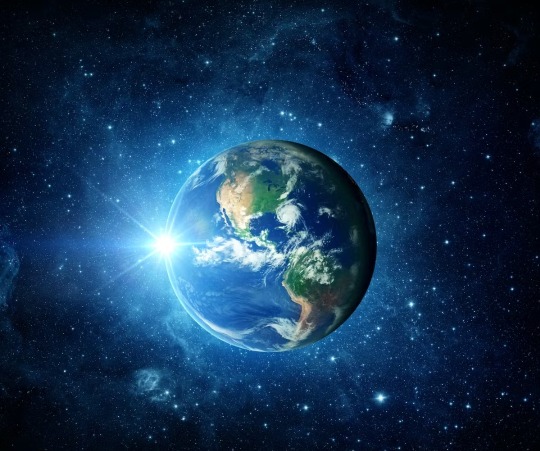
With this information, to work out how fast Earth is spinning we need only our planet’s circumference. At the equator, its circumference is roughly 40,075 kilometres, so dividing this by the length of day means that, at the equator, Earth spins at about 1670 kilometres per hour.

However, this speed of rotation isn’t consistent across the planet. As you move north or south, the circumference of Earth gets smaller, so the speed of spin reduces until it reaches its slowest at both poles. And all of this is nothing compared with the 107,000 kilometres per hour at which Earth orbits the sun.
If we are travelling so fast through space, why can’t we feel it?

Simply put, as Earth is spinning at a constant speed, so does everything on it. Travelling at the same speed means we cannot feel the spin. It is like driving a car. Even though you are moving, you aren’t aware of speed because it is constant. Only when you change speeds do you notice you are travelling, like putting your foot on the accelerator or making an emergency stop.

A change in speed has been happening here on Earth, but it is far too slow to notice. Millions of years ago, one Earth day was about 22 hours, and Earth’s speed has been dropping for more than a billion years, with days increasing by around 2 milliseconds every century.

This slow down is caused by friction created by the ocean currents, tides and wind pulling on Earth’s surface. However, global warming may speed things up again. As sea levels rise, this change in mass could result in Earth spinning faster and reducing the length of each day by 0.12 milliseconds, which would have dramatic effects on the calibration of atomic clocks and GPS systems.

What if Earth were to stop spinning?
Without a huge external force, this is impossible. But, if Earth were to stop spinning, the atmosphere would continue to spin at the speed of Earth’s rotation, so anything not fixed to the surface, including trees and buildings, would be swept away by the strong winds.
Each side of the planet would get six months of continuous sunlight and six months of darkness.

Without the centrifugal force of the spin, the oceans would gradually move towards the poles, creating a huge supercontinent across the equator. But we wouldn’t be flung off Earth. Gravity and the centrifugal force of Earth’s spin keep us grounded. In order for us to feel weightless, the centrifugal force would need to be ramped up. At the equator, Earth would need to spin at 28,437 kilometres per hour for us to be lifted off into space.
Originally published on newscientist.com
COMING UP!!
(Saturday, September 16th, 2023)
"HOW DO WE KNOW THE UNIVERSE IS INFINITE??"
#astronomy#outer space#alternate universe#astrophysics#universe#spacecraft#white universe#space#parallel universe#astrophotography#beautiful earth#earth#earth science#the strong nuclear force#gravitational force#gravity#gravitational waves#dark energy#sun#star#science#solar system
89 notes
·
View notes
Text

I got some word from the trenches... Well, someone else got the word from the trenches, and gave me the word...
Regarding MOANA 2's ascension from Disney+ show to feature film.
It was indeed speedran into this process and fast-tracked for this past Thanksgiving because an original animated feature slated for this season had gone down a particularly rocky road.
It was indeed the film set to be directed by Suzi Yoonessi, who was named director of an upcoming untitled original WDAS movie waaaaaay back in November 2019. That Middle Eastern-set fantasy... Something about it being a "massive mess", and Yoonessi "running out of time and chances" to fix it...
I think that translates to: Jennifer Lee and studio management and focus groups micromanaged the picture to death, trying to chase some kind of perceived greatness and great box office. It indeed often worked out for John Lasseter a lot, but not so much Lee most of the time, for STRANGE WORLD and WISH did very badly at the box office. MOANA 2 may be a juggernaut right now, but it's got mixed critical reception and won't be locking an Oscar nom. But we know why it's doing numbers, it's a freaking Moana and pals movie! That was destined to be massive on opening weekend. The film could have the worst legs and still be profitable.
So it seemingly is true, if the birdies are to be believed...
We just witnessed a very weird, frustrating, and fascinating chapter of Walt Disney Animation Studios' century-long history...
Following the start of a global pandemic, a flawed leadership turned out two films that failed miserably at the box office - STRANGE WORLD and WISH, the latter of the two films intended as a centennial celebration. Their next original was set for Thanksgiving 2024, but because of the micromanaging that helped hurt STRANGE WORLD (remember, that film's director Don Hall left the studio shortly thereafter) and WISH, it got put on hold. Possibly cancelled...
... and amidst the streaming bubble burst of the early 2020s, the same leadership decided to take a serialized spin-off of a past hit movie - MOANA - meant for Disney+ and hastily turn that into a feature to fill the vacant Thanksgiving 2024 slot. Turning it into a stopgap feature that pretty much made up for those past losses at the box office probably on brand recognition alone... Oh, and the chief creative officer stepped down prior to its release, with only a six-year tenure to her name...
I think I see what's happening here... They realized that this kind of leadership wasn't working out, or the way Lee herself was doing it. Again, director removals from movies and their stories being micromanaged is nothing new in feature animation. The big Renaissance faves went through iterations that were torn to shreds by Jeffrey Katzenberg. Lasseter made sure every movie made under his watch was to his liking, that the directors were making "Lasseter movies" at the end of the day. But Lee just wasn't cutting it, though not to the point where she completely departed the building. She's still there, now in a filmmaking position, so there's that.
But there's something screwy about all of that. This isn't like Walt Disney rerouting after World War II took the wind out of the studio's sails, and opting for anthology movies made up of multiple shorts and scrapped feature ideas (such as WIND IN THE WILLOWS and MICKEY AND THE BEANSTALK). Nor is this like how WINNIE THE POOH got fast-tracked at WDAS during Lasseter's tenure, about merely 2 1/2 years before its eventual release. Or even the rumored fast-tracking of FROZEN a little after it had been put on ice. Or even WDAS looking to Marvel after the parent company recently acquired them, for a feature only once. This was done very, very quickly and almost out of nowhere. When it was announced back in February, I was taken *completely* by surprise.
... and the thing was a huge success out of the gate... A temporary save for WDAS, and likely to become one of their biggest movies financially. This thing, a literally rushed TV show to movie...
It's a real first, and likely the only time that happens. At least, in terms of closeness to release date. I already emphasized that TIANA likely stays a Disney+ show, but if it gets turned into a movie, I can only hope it's a decision made well before any projected release date.
I think the era of WDAS (and Pixar) making quasi-movie-caliber shows for Disney+ is over, what's left for now is TIANA, and on the Pixar end there's the long-delayed WIN OR LOSE in February, DREAM PRODUCTIONS this month. I know of nothing else in the works for Disney+ that's like any of those shows or what came before (i.e. BAYMAX!, ZOOTOPIA+, CARS ON THE ROAD, DUG DAYS, etc.).
So now the next chapter begins...
Stopgap movie/former D+ series MOANA 2 is here and already made massive coin, Jennifer Lee is no longer CCO, two confirmed movies on the release calendar - ZOOTOPIA 2 and FROZEN III - started out as movies... And are also sequels to recent favorites. No matter who is in charge, more of them are simply inevitable. You'll likely hear a MOANA 3 or ENCANTO 2 announcement some time soon. But yeah, more sequels will keep coming. Been the nature of the beast for a while now...
It now seems that Suzi Yoonessi's movie is either dead in the water, was given to another filmmaker, or is being retooled further and will be held off for a while - maybe finally debuting in 2026. Maybe not. Maybe a completely different original movie has been cooked up over the past few years and will be ready for a fall 2026 release...
We'll have to wait and see where all the pieces fall...
8 notes
·
View notes
Text
Paramount Global Content Distribution has landed in Cannes with a new NCIS for international buyers, NCIS: Origins. Ahead of the event, Deadline spoke to the team behind it: Mark Harmon, the original Leroy Jethro Gibbs and an exec producer on the new show, along with his son and fellow EP Sean Harmon, and co-showrunner/EPs David J. North and Gina Lucita Monreal.
NCIS as a franchise has launched shows set in Los Angeles, New Orleans, Hawaii and Sydney, Australia, and clocked up more than 1,000 episodes of network drama. Its latest variant, NCIS: Origins, provides something different and darker as the show goes back to the source.
“The character of Gibbs has resonated with global audiences because he is a role model and at the same time someone you can relate to,” says Sean Harmon. “The world is used to seeing Gibbs as ‘the boss’, but in NCIS: Origins we are dealing with a much less tempered version of him. Fans can look forward to a more intimate look into what makes Gibbs tick, as well as meeting some of the characters who influenced him along the way.”
The prequel winds the clock back to 1991. It starts on Gibbs’ first day of work as a probationary agent, and flashbacks set up how he ended up at what was then called NIS. “He’s much more raw in a lot of ways, he’s more vocal than the Mark Harmon Gibbs we all watched for so many years,” says North.
The new recruit has endured a terrible personal tragedy months before the point where the series kicks off. “NCIS: Origins is just after the death of his wife and daughter,” says Mark Harmon. “He is the ‘newbie’ at NIS and learning every day under Special Agent Mike Franks. We will see him develop and grow into the man he becomes, and we will ride with the audience revealing that backstory and history.”
In the new show, Austin Stowell steps into Gibbs’ shoes. “Mark has told him to trust his process and his instincts and is available to him,” North says. “Austin has studied Mark and his mannerisms, but at the same time, it’s a different character and a different period in his life, and he’s brought so much of himself to it.”
North says NCIS fans are in for a surprise. “It’s much more serialized. Gina and I originally sold it and developed it for streaming for Paramount+. It moved over to network [with a 2024-25 season straight-to-series order], but we wanted to do more of a streaming style of show.”
Monreal picks up the thread. “The tone itself is a bit grittier, it’s a bit darker, which we love, because we feel like we’re pushing the envelope as far as what the franchise does, but at the same time, we’re keeping the heart of it,” she says. “What makes NCIS so beloved is this found family
The showrunner pair have written for what they call the ‘OG NCIS’ and want fans to come along for a new kind of NCIS ride.
“We believe we know what that special sauce is, and we think we’ve infused our show with that,” North says. “But we really are going to a deeper place where we’re taking these characters and learning so much. The most special episodes of NCIS are always the ones about our characters. Those are all sprinkled throughout the seasons, and those are the ones that stick with people. Gina and I have sought out to do that every single week on NCIS Origins.”
6 notes
·
View notes
Text
what do you mean merlin made catholicism
Again staying awake at night, haunted by the implications of The Original Merlin helping to establish the Catholic Church. And on one hand I feel it's really easy to let this line slip by like a lot of other one-liners talking about long-term history. But this one takes the cake in terms of the sheer magnitude of implication. Like, Jim Butcher probably just thought it was a neat idea to throw in that he would never really expand upon further. BUT I DO. EVERY DAY. BECAUSE I FEEL IT'S SUCH A WASTE TO JUST BE A THROWAWAY LINE.
(Spoilers for Dresden obvs)
Like, if the Original Merlin helped establish the Catholic Church then that means they've been aligned with the White Council since practically its inception and vice versa. We're not sure when exactly this iteration of the White Council was created but regardless if it was created first or second this just cements the weird White/Christian ethnocentrism that exists in the White Council (a title that gets more accurate the more you think about it).
Like here's an obvious question: Were there wizards in The Crusades?
Probably, right? Like, sure, The White Council maybe has actually clung to their doctrine of non-involvement in human politics for thousands of years. But, like, that's kind of rich when OG Merlin was out there helping to create the Catholic Church, an organization that would be used to justify the monarchies of soooo many countries. You're telling me they remained apolitical, a THOUAND years ago when our conceptions of what counted as "political" are completely different? To say nothing of, wow I wonder if the Scottish magic practitioners were cool with the Anglo Christian wizards setting up shop in their ancient magical grounds. Do you think Britain/The Britons stole that too? Or are we to believe they just "handed it over willingly"? Or are we to believe that the Scottish mages got along with their invaders because of "apolitics"?
Another obvious question: Hey why aren't there any other wizard councils?
In some kind of United Nations-y situation, it feels like The White Council is supposed to be a conglomeration of cultures and practices across the world with a unifying board of diverse members who make major decisions. And that's really cool! I really appreciate the idea that there can be a global community for people who don't fit in to connect and learn from one another.
But uhhh. Why does it feel so hegemonic and imperialist?
Like, the Senior Council is diverse, that's true. Some of the members are POC, between Rashid, Listens-With-Winds, Martha Liberty, and Ancient Mai. But as you go through the list you kind of again wonder how any of these different people from different practices and backgrounds were able to cope with Western Euro Imperialism. Like, the most obvious example is Listens-With-Winds, a character who in his lifetime, witnessed genocide after genocide of not only his people but of all of the tribes across the United States. Rashid in his lifetime, likely watched the US turn the Middle East into a oil profit machine backed by US militarism and CIA support. Martha Liberty in her lifetime, watched Black people fight and claw for their basic human rights in a country that was built off the backs of their exploited labor. Ancient Mai, in her likely very long lifetime if the name is any indication, likely watched the exploitation of China and Asia by the Dutch, France, and the other European powers.
Again, are we to expect the White Council is WHOLLY APOLITICAL IN EVERY ONE OF THESE CONFLICTS?
And if they are, is that really being apolitical if it ends up working out in their favor anyways? Again, look at Edinburgh. Look at all the stuff Britain stole.
---
Ultimately I think this is a lesson in setting consideration for urban fantasy writers. Lindsay Ellis' video on Bright talks about this excellently, but to poorly paraphrase, you can't just import the real world without importing all of the baggage and strife that exists within it. You can't flippantly say, "Merlin helped found Catholicism." Without pedants like me going, "Uh. What the fuck do you mean?"
But also totally do that so I can harp on it endlessly this is the shit I love for.
I've got more like this brewing in my head I might put up, im also interested in what other implications people can think of
#dresden files#the dresden files#media analysis#literary analysis#thonking so hard about this fucking book series i havent read in years#i should read it again#spoilers
12 notes
·
View notes
Text


















National I Love Horses Day
This National I Love Horses Day on July 15, we are not going to tell you to hold your horses because today is about going all out for horses. Horses are one of the most beloved and adored animals in the world. In fact, horses are in fourth place on the list of the world’s most popular animals. Horses have been very important for humankind for a while now, having been domesticated since ancient times. Due to their versatility, horses are used in a variety of fields, from agriculture and transportation to entertainment. Horse racing and show jumping also see horses showing off in front of cheering crowds.
History of National I Love Horses Day
National I Love Horses Day was created to highlight the importance of the animal in human history and development. Horses have been around for around 50 million years and they were domesticated by nomads in 4000 B.C. The animal is believed to have originated from North America, with increased traveling and globalization taking it to other parts of the world. These early horse breeds later became extinct on the American continent. According to the Integrated Taxonomic Information System, today, there are many other horse breeds but all of them are believed to have descended from Equus caballus, including the populations of feral horses in the wild. Horses have 350-degree vision and are extremely social. They roam around with their own species as well as other animals. Furthermore, their aptitude in socializing makes them easy animals to breed.
In the old days, horses were domesticated and farmed for their meat and milk. The animal was an important source of sustenance in the central Asian steppes, where, to date, horses are bred for consumption. In some cultures, a mare’s milk was also fermented and enjoyed as an alcoholic drink. As human populations increased and commercialization started taking over, horses began being used to cultivate the land and other general agricultural settings. Because of the strength and endurance they displayed, horses were also being used for the transportation of goods and people over long and short distances. Over the years, horse racing and show-jumping contests also gained the attention of the public.
National I Love Horses Day timeline
4000 B.C. Earliest Recorded Instance of Horse Domestication
The earliest records of horse domestication are found, particularly in areas of Ukraine and Kazakhstan.
1992 Przewalski Reintroduced in the Wild
After believing the species to be extinct for over 20 years, the Przewalski's horse breed is reintroduced into the wild through conservation efforts.
1993 American Secretary Appointed for Wild Horses
President Clinton nominates the secretary of the U.S. Department of the Interior, Bruce Babbitt, to oversee the care for wild horses in America.
2005 Legislation for Unadopted Horses
Legislation is passed in order to allow unadopted horses to be taken to slaughterhouses after an allotted period of time.
National I Love Horses Day FAQs
What day is National Horse Day?
National Horse Day is on December 13.
What is a Hippophile?
A hippophile is a person who loves horses.
Can horses love humans?
The love you feel for your horse may not be exactly reciprocated. But a horse can certainly feel — and give — affection.
How To Celebrate National I Love Horses Day
Show some love
Ride a horse
Spend a day with horses
Horses and humans go way back. Show some love to these amazing animals that have been our companions in many fields. They have helped feed us, travel through familiar and unfamiliar terrains, and entertained us endlessly on the racing fields and stage.
If you’ve never ridden a horse before, this is your chance to grab the opportunity. Book yourself a spot on a horse riding tour, and then just sit back and enjoy. Feel the wind in your hair. Riding a horse is an experience you must try at least once.
Find horse farms in your area and go and spend a day with horses. You help feed them, brush them, and take them for a trot or a light canter. Horses are friendly creatures and spending time with them can be very therapeutic.
5 Facts About Domestication That Will Blow Your Mind
One of the earliest domesticated animals
Pigs/cattle for more settled communities
Age-old eggs
Changes in genes for easier domestication
Darwinian documentation for behavior patterns
Starting in around 7000 B.C., dogs were one of the earliest domesticated animals, for reasons related to protection from other humans and animals.
Historians trace the domestication of pigs and cattle back to around the same time goats and sheep were domesticated, but the former are believed to have been domesticated in communities that were already settled.
Microfossil embryos of chickens found in China are believed to be 60 million years old.
Changes to the gene markers of an animal’s endocrine system can help them be less fearful of humans.
Charles Darwin documented different behavioral patterns in domesticated animals compared to their non-domesticated relatives.
Why We Love National I Love Horses Day
It’s a celebration of horses
It’s a celebration of companionship
It’s a celebration of history
While we do not need to introduce you to the incredible qualities of the animal, here are some of their most beloved attributes: Horses, much like dogs, are loyal animals. They also have amazing stamina, strength, and speed that enable them to endure long distances without breaking a sweat.
Horses are social creatures with a great ability to read and remember the people around them. While they have helped humans in a number of areas, they have also made great friends. Horses can understand when you are stressed, angry, or happy, and they can comfort you when needed.
If you want to trace the history of human civilization, researching horses is a good start. This animal has been an active participant in agriculture/farming, travel, transportation, entertainment, and warfare. People have been domesticating and employing horses for generations.
Source
#north Swedish horse#wild horse#Graceland#Tyresta National Park#travel#original photography#vacation#tourist attraction#landmark#landscape#Kings Landing Historical Settlement#New York City#Memphis#New Brunswick#animal#Tennessee#Stockholm County#Nevada#Sweden#National I Love Horses Day#15 July#NationalILoveHorsesDay#USA#cityscape
10 notes
·
View notes
Text
🌃 ThisIsAPlaceholderSoPeopleDon'tThinkIWroteThisPic Follow

~~~
🌇 OkayNowHere'sMySection Follow
(I spent like ten minutes writing a response to this post + some of the reblogs that it had accumulated and then the OP disabled reblogs JUST as I hit post, but by god I am gonna say my bit. I've removed OP's name from the post and they've deleted the body of the post on their main blog, so don't any of you try looking them up to bother them, either.)
I'd also like to add on to this discussion regarding criticism and the points that have been brought up there-- it's true that no one is free from criticism, as OP points out in the original post. But having that sort of hyper-aggressive attitude towards fiction, especially without taking potential authorship into account (or worse, taking it far too much into account to the point where you harass the person who wrote it), can result in unintended harm towards real people. It's how you end up with situations like Isabel Fall de-transitioning and winding in a psychiatric institute under suicide watch because people mistook a transgender author's exploration of a transphobic stereotype as a topic as a story intended to be a transphobic stereotype itself.
The Vox article about Isabel has the quote, "Sometimes, the path to your personal hell is paved with other people’s best intentions" (Source). I think that's a very poignant and relevant perspective, where sometimes people--like OP--may think that they, as global citizens, have a duty to uphold morality and righteousness in their online spaces for the safety of themselves and their communities... but in actuality, their actions end up having negative effects far, far beyond their intentions, and don't end up protecting or saving anyone much at all. It can be a hard pill to swallow to realize that, but the real actions that people do in retaliation to fiction often create far, far more damage that the fiction ever does existing on its own. For another example, just look at the creator JoCat, who left his YouTube career this year because of the harassment he faced due to his 2020 35-second long video game animation and song, "I Like Girls" (a genderbent parody of Lizzo's Boys that he'd verbally improved on the spot during a Twitch stream). In his goodbye post, he wrote:
"[...] Granted, a lot of this has been primarily on twitter, where I could simply log off and ignore the haters, but no small amount has leaked into other parts of my regular day to day that is harder to ignore - private DMs over discord and twitch, suspicious packages being sent to my family - but I’ve always kept quiet about it because speaking out about it publicly, defending myself, any reaction to it would just encourage more, and be presented as my own fault as well. But if that’s the tradeoff to do something like share the things I make that I’m proud of on the internet, seeing as I’m writing this, it’s probably an indicator that I’m just not cut out for it, and the best thing for everyone would be to stop and pursue something else. Despite being very grateful for what this job has done for me and my family, I’m simply not strong enough to keep doing this if it means having to just accept this kind and amount of distress." (Source)
I think there's worthwhile conversations to be had about the necessity of criticism as a tool to critique common issues with genre, tropes, and popular media in fiction. But I feel like what is being spoken about here, in this post and in these examples-- criticism not as a tool of critique, but as a personal and direct attack, an unveiling of what the criticizer interprets to be the secret and impure Self of the artist or author--is another beast entirely, and one that typically shouldn't be brought to the forefront. It's turning real, thinking individuals into monsters in the eyes of audiences ready to devour them for the slightest transgression, and does that actually help anyone? Rarely do artists and authors deserve to be publicly ridiculed en-masse for their work to the point where they walk away from it, and doing so doesn't actually help make positive changes in any way... because the people who you could have those important discussions with, about the things that both you are critical of in certain genres, writings communities, stories, tropes, etc have now packed up their bags and left.
Everyone is familiar with the "You are not immune to propaganda" Garfield meme. And while it may be funny, it's also true. People make mistakes and create things which are unintentionally insulting, either because the author is leaning on offensive stereotypes or tropes without realizing it, or because the author isn't worldly to the baggage that certain subjects carry within them (such as people who reference Lovecraft's work without having the background information that he was a horrible racist, sexist, and xenophobe). But heckling them and telling them that they're secretly terrible people and should never create anything ever again isn't going to inform them about these subjects. It's going to result in them getting defensive, prickly, and running off. There is no net gain to this scenario. The amount of Good in the world has not increased from this interaction.
This all isn't touching on people who intentionally play with stereotypes or tropes in their writing, nor is it touching on the inherent religious bigotry and Christiancentrism wrapped up in the idea of someone's fictional stories or writings being reflective of their innermost desires and morality, because this is getting pretty long. But I wanted to put out my own thoughts on this in addition to what's already been said.
#long post#discourse#It's like 900 words I was NOT just gonna bin this#I edited a few places where I was talking with OP directly but the lines are still the same just slightly modified for an audience instead#Also this is a really important discussion to have.
24 notes
·
View notes
Text
The fiery apocalypse in California can be seen from space. Fire has consumed schools and stately homes

New satellite imagery has shown the vast extent of the damage caused by the widespread wildfires in California. For example, the famous Los Angeles neighbourhood of Pacific Palisades and a coastal residence in Malibu have been reduced to ash and charred rubble.
In California, seven people have died so far this week during widespread wildfires, more than 10 000 buildings have been destroyed and at least 180 000 residents have been evacuated, The Guardian reported.
On Tuesday, hurricane-force winds drove hot embers through the air, igniting block after block. In the days that followed, the flames destroyed an area of about 45 square miles (117 km²). Late Thursday night, five fires were still raging around Los Angeles, three of them completely out of control.
Newly released satellite images have shown the extent of the destruction caused by the Pacific Palisades fire. The coastline along Malibu's famous Malibu neighborhood was completely blackened and buildings along the beach burned to the ground. More than half a dozen schools were damaged or destroyed in the Pacific Palisades neighborhood alone.
Los Angeles Mayor Karen Bass said the new fire, dubbed Kenneth, which originated Thursday afternoon in the San Fernando Valley near the West Hills neighborhood, was expected to 'spread rapidly due to high winds.'
In Altadena, over the mountains north of Los Angeles, where a wildfire called Eaton has spread, satellite images show rows of streets with the rubble of charred houses, smoke from nearby fires still billowing in the air. On Wednesday, the streets were filled with ash, buildings still ablaze. Authorities said on Thursday that previous estimates put the number of destroyed buildings at 4 000 - 5 000.
Pasadena Fire Chief Chad Augustin said the city's water system was at its limits and was further hampered by power outages. Even without those problems, however, firefighters would have been unable to stop the blaze as embers fanned by intense winds ignited block after block.
Firefighters made significant gains Thursday in slowing the spread of the Eaton and Palisades fires, although officials said both fires are 0% extinguished. Firefighters also knocked down a blaze in the Hollywood Hills.
The fires broke out at a particularly critical time for Southern California. In fact, there hasn't been any significant rainfall since October. Strong Santa Ana winds brought dry desert air from the east toward the coastal mountains and helped fuel the fires.
Scientists say the fires, which broke out outside of their typical season, are another example of extreme weather that is likely to continue to escalate in the coming decades as global temperatures continue to rise.
Source: blesk.cz
Picture: illustrative
#usa#news#global news#breaking news#public news#blast news#california#fire#pacific palisades#the guardian#los angeles#malibu#karen bass
3 notes
·
View notes
Text
White Spell
youtube
Original song by Maeda Jun and Yanagi Nagi
Based on a translation by moonsnow
just my luck we got a she is legend variation of this song while i was sitting on this. i'm paranoid of spoilers though so i'll tackle that version when it comes to global servers. wee.
also yeah i'm locked in. i'm gonna do all of love song from the water. the entire album. so stay tuned!!!!
------------------------------------------------------------------------------
(Stars that shine so bright) (Block you out of my view)
The winds that blow on strong Give rise to anxiousness Across the seasons birds still fly, Flapping their wings as they Aim for a brighter star Try to go as far as them, Like our ancestors once did
This vivid landscape changes and sways Even the sea’s blue waves will gray It's a somber thought to dwell All will bid farewell, so
When that day arrives, could you please tell me Will I still laugh? Or will I cry? Which will it be? (On that morning sky…) I’ve grasped at your path, traced all your footsteps If only I had followed you then, it still haunts me Now you're a memory…
Anytime now, winds blow cold Leaving behind with them The warmth of harvest time Only to meet again When flowers bloom anew That will mark the day when all Life springs back into our view
This short breath turns into white mist And my fingers numb their grip Yet still, I will push ahead Far past wounds I bled, so
When that day arrives, when I tell the truth Will you be mad? Or will you cry? Which will it be? (Even called by name…) I grasped at your hand, asked to stay by you I beg of you, not to leave me all on my own I hate being alone…
The words you speak asleep are a magic spell (The words you speak asleep are a magic spell) (The words you speak asleep are a magic spell) (The words you speak asleep are a magic spell)
When that day arrives, when I make it there Will they all laugh? Or will they cry? Which will it be? (On that morning sky…) I’ve grasped at your path, traced all your footsteps If only I had followed you then, it still haunts me (Even when called by name…)
Let's prepare for flight The winter is coming up in line The harvest season will pass in time, leaving us in drought (On that morning sky…)
All that’s erased by wind Blinded by the stars that never end That morning sky is perfect for saying goodbye (Even when called by name…)
(You’re blocked out of my view) (Even when called by name) (You’re blocked out of my view)
------------------------------------------------------------------------------
I don't particularly have any notes on specific lines this time, only a general note that due to the translation and the original Japanese having very different line lengths, some lines were extended in this lyric set to have a bit more meat to them- I tried to avoid extending too far past the original meaning, but I'm not poetic enough to bs one line into three without a bit of ad-libbing.
#jun maeda#maeda jun#nagi yanagi#yanagi nagi#gacha games#heaven burns red#へブンバーンズレッド#へブバン#hbr#hebuban#ruka kayamori#yuki izumi#karen asakura#tsukasa tojo#megumi aikawa#tama kunimi#white spell#translyrics#japanese#Youtube
2 notes
·
View notes